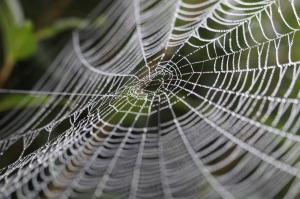
Image Courtesy of: Efraimstochter http://pixabay.com/en
Modern manufacturing is undergoing systemic changes. Technology is changing how things are produced as well as how companies interact with clients. Collaboration, co-creation and mass customization are becoming the new norm. Here are two perspectives on the subject (a) easy read scholarly article, and, (b) dedicated blog post with Q&A. These changes are altering the economic dynamics of manufacturing production ranging from consumer demand to economies of scale, the nature of products created and economic value chains.
In addition, regulatory pressure and consumer pressure are increasing the need for triple bottom line (People, Planet, Profit) business models. The desire to change towards better systems is present in everyone. The process ability to change is where most get overwhelmed. At Global Ectropy we believe that process change begins with a change in mindset. Before we can change anything we must first understand why we are making changes. How much of what I do now can I keep? How can I anticipate which changes will be tweaks and which changes can lead to costly system overhauls? How do I integrate nature in a mechanical process?
Modern strategic planning and design thinking have blended to improve human scale solutions. Although design has always been a part of planning, design thinking requires careful attention to form and function BEFORE analyzing SWOTs or planning operations. This approach sides on the form side of the old debate of function follows form (start with the form first) instead of form follows function (start with function first). If we are to alter our consumption in response to resource scarcity (e.g. clean water, healthy soil, renewable materials) we must first understand what creates these resources and how our production activities alter them. Permaculture is one design thinking tool that increases understanding by showing us our inter-dependency with nature and with each other. It is well documented that the design of our work environments affect our interactions and productivity.
The challenge becomes, how do we take all this morass of information and apply it to production plant changes? What started out as a joke has turned into a philosophy/mantra at Global Ectropy. We were chatting about “plant efficiency” and forgot to specify we were talking about nature plants (i.e. how can we use all of a botanical plant so there is no waste). These discussions started with what is now an “old” Kenya breweries project focused on using sorghum. There are many lessons learned from farming inputs to actual production and by-product synergy (aka industrial symbiosis). We were trying to apply these lessons to sisal production and we sent an email talking about plant efficiency which generated a response about manufacturing plant facilities when we were asking about botanical plants. What we discovered is there is a need for a mental model that can be used daily. Something that everyone from management to the shop floor can embrace as a shared vision of the way things should work and want natural flow means. Our miscommunication joke has led us to start to talk about plant-to-plant theory (leaving it deliberately ambiguous which plant we are referring to).
Biomimicry is a design approach that teaches us to look to nature for inspiration when we build mechanical systems. This led us to examine production systems: what can we learn from nature about improving productive strength and efficiency? We selected a spider web for inspiration and were thrilled to discover research on improving plant energy efficiency using a spider web layout! If you have the budget, we are sure there are super cool building designs you would like to adopt. However, if you are like us, small cash strapped start-up, this excitement has to boil down to what you can do with what you have. Sooo, we have linked spider web concepts to Lean Six Sigma production principles which you can get by requesting our whitepaper….
This world is a beautiful place once you open your eyes to inspiration!
________________________________________________________________________________________________________
We do not sell your contact info to any entity. Information is used for internal purposes only.
Please provide the following information in order to receive a copy of our Spider Web Production Whitepaper: